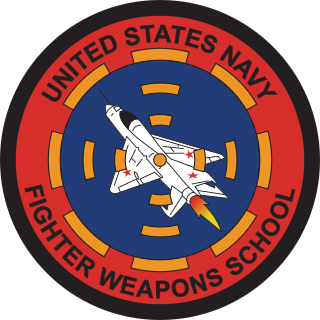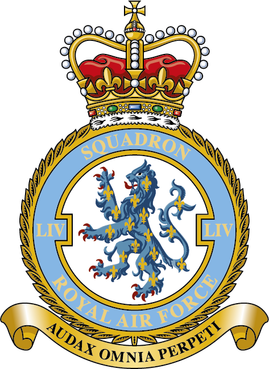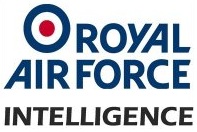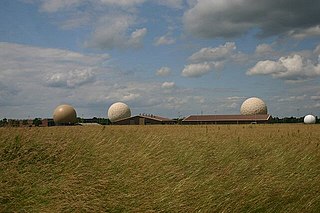Related Research Articles

The United States Navy Strike Fighter Tactics Instructor program, more popularly known as Top Gun, is a United States Navy training program that teaches air combat maneuvering tactics and techniques to selected naval aviators and naval flight officers, who return to their operating units as surrogate instructors.

Number 54 Squadron is a squadron of the Royal Air Force based at RAF Waddington, Lincolnshire. On 1 September 2005, it took on the role of Intelligence, Surveillance and Reconnaissance (ISR) Operational Conversion Unit, and is now the Advanced Air ISTAR Academy, responsible for training all RAF crews assigned to the MQ-9A Reaper, Protector RG1 (MQ-9B), Shadow R1/R2, RC-135W Rivet Joint and Poseidon MRA1. It also controls the RAF ISR Warfare School (ISRWS) who run the Qualified Weapons Instructor Intelligence, Surveillance and Reconnaissance and QWI Reaper Courses.

An aggressor squadron or adversary squadron is a squadron that is trained to act as an opposing force in military wargames. Aggressor squadrons use enemy tactics, techniques, and procedures to give a realistic simulation of air combat. Since it is impractical to use actual enemy aircraft and equipment, surrogate aircraft are used to emulate potential adversaries.

The Air Education and Training Command (AETC) is one of the nine Major Commands (MAJCOM) of the United States Air Force (USAF), reporting to Headquarters, United States Air Force. It was established 1 July 1993, with the realignment of Air Training Command and Air University.

Intelligence services in the Royal Air Force are delivered by Officers of the Royal Air Force Intelligence Branch and Airmen from the Intelligence Analyst Trade and Intelligence Analyst (Voice) Trade. The specialisation has around 1,200 personnel of all ranks posted to operational air stations, HQs and other establishments of the British Armed Forces, both in the United Kingdom and overseas.

Joint Terminal Attack Controller (JTAC) is the term used in the United States Armed Forces and some other military forces for a qualified service member who directs the action of military aircraft engaged in close air support and other offensive air operations from a forward position. The term that is used in most other countries, as well as previously in the U.S. and in the relevant NATO standard, is Forward Air Controller. The term became effective in the U.S. on September 3, 2003 with the publishing of Joint Publication (JP) 3-09.3 Close Air Support.

Royal Air Force Feltwell or more simply RAF Feltwell is a Royal Air Force station in Norfolk, East Anglia that is used by the United States Air Forces in Europe – Air Forces Africa. The station is located about 10 miles west of Thetford, and is in the borough of King's Lynn and West Norfolk at approximate Ordnance Survey grid reference TL 715 900. A former Second World War bomber station, the airfield is used as a housing estate for United States Air Force personnel stationed nearby at RAF Mildenhall.

The Naval Aviation Warfighting Development Center was formerly known as the Naval Strike and Air Warfare Center at Naval Air Station Fallon located in the city of Fallon in western Nevada. It is the center of excellence for naval aviation training and tactics development. NAWDC provides service to aircrews, squadrons and air wings throughout the United States Navy through flight training, academic instructional classes, and direct operational and intelligence support. The name was changed from NSAWC to NAWDC in June 2015 to align with the naming convention of the Navy's other Warfighting Development Centers (including Naval Surface and Mine Warfighting Development Center, Naval Information Warfighting Development Center, and the Undersea Warfighting Development Center.

A Weapon Systems Officer (WSO), nicknamed "Wizzo", is an air flight officer directly involved in all air operations and weapon systems of a military aircraft.

The General Atomics MQ-9 Reaper is an unmanned aerial vehicle capable of remotely controlled or autonomous flight operations, developed by General Atomics Aeronautical Systems (GA-ASI) primarily for the United States Air Force (USAF). The MQ-9 and other UAVs are referred to as Remotely Piloted Vehicles/Aircraft (RPV/RPA) by the USAF to indicate ground control by humans.

The USAF Weapons School is a unit of the United States Air Force and United States Space Force, assigned to the 57th Wing and Space Delta 1. It is located at Nellis AFB, Nevada.

The 39th Information Operations Squadron is an information operations and cyber Formal Training Unit, part of the 318th Cyberspace Operations Group.

The Air and Space Warfare Centre (ASWC) is a Royal Air Force research and testing organisation based at RAF Waddington in Lincolnshire. It has a training branch nearby as a lodger unit of RAF Cranwell and other branches elsewhere, including at RAF High Wycombe, RAF Brize Norton, MoD Boscombe Down, and RAF Odiham.

The 19th Weapons Squadron is a United States Air Force unit assigned to the USAF Weapons School at Nellis AFB, Nevada.

A United States Air Force Tactical Air Control Party, commonly abbreviated TACP, is an individual or team of United States Air Force Special Warfare Airmen with AFSC 1Z3X1, who are aligned with conventional, Special Operation Forces, and Tier 1 combat maneuver units. They provide precision terminal attack control and terminal attack guidance of U.S. and coalition fixed- and rotary-wing close air support aircraft, artillery, and naval gunfire; establish and maintain command and control (C2) communications; and advise ground commanders on the best use of air power.
The Northrop Grumman RQ-180 is an American stealth unmanned aerial vehicle (UAV) surveillance aircraft intended for contested airspace. As of 2019, there had been no images or statements released, but growing evidence points to the existence of the RQ-180 and its use in regular front-line service. The use of the nickname "White Bat" in a 2021 video released by the US Air Force Profession of Arms Center of Excellence (PACE) suggests that the military may be preparing to release information on the RQ-180.
The Strike Attack Operational Evaluation Unit (SAOEU) or Strike Attack OEU, was a unit of the Royal Air Force based at RAF Boscombe Down in Wiltshire between 1987 and 2004. The unit operated the Panavia Tornado GR.1 and GR.4, BAE Harrier GR.5 & T.4A and SEPECAT Jaguar aircraft. The role of the SAOEU was to evaluate new and existing equipment and to develop fast-jet ground attack tactics in order to provide timely advice to the front line.

The United States Navy's Carrier Airborne Early Warning Weapons School, more popularly known as CAEWWS, is an American military unit that develops and teaches E-2D and E-2C Hawkeye tactics, techniques, and procedures (TTP) to selected Naval Aviators and Naval Flight Officers. CAEWWS originated in the early 1980s as the tactics department of VAW-110 on Naval Air Station Miramar, California, but later commissioned on 13 July 1988 as an independent command. Today CAEWWS is incorporated into the Naval Aviation Warfighting Development Center (NAWDC) as the command and control (C2) weapons school along with the Navy Strike Fighter Weapons School (TOPGUN), Airborne Electromagnetic Attack Weapons School (HAVOC), Navy Rotary Wing Weapons School (SEAWOLF), Maritime Intelligence Surveillance Reconnaissance Weapons School (MISR), and STRIKE.
References
- 1 2 "United States Air Force Weapons School > Nellis Air Force Base > Display". Nellis.af.mil. 10 May 2016. Retrieved 23 February 2017.
- ↑ "Air Power in an Uncertain World". RAF. Archived from the original on 2 February 2017. Retrieved 23 February 2017.
- ↑ "Find, Fix, Track, Target, Engage, Assess". Airforcemag.com. Air & Space Forces Magazine. Retrieved 23 February 2017.
- ↑ "Welcome to Number 54 (Reserve) Squadron". Raf.mod.uk. Archived from the original on 14 March 2017. Retrieved 23 February 2017.
- ↑ "Qualified Weapon Instructor (QWI) (Pilot) - 807". Archived from the original on 18 October 2007.